
Mannerism - an elegant, pretentious, and ambiguous style of the 16th and 17th centuries
Mannerism is an artistic style that succeeded the fading Renaissance and preceded the Baroque era. It is characterized by the extravagance of painting style and boldness on the one hand and refinement and sophistication on the other. Often, paintings in this style feature contorted, tense, and intricate lines and forms.
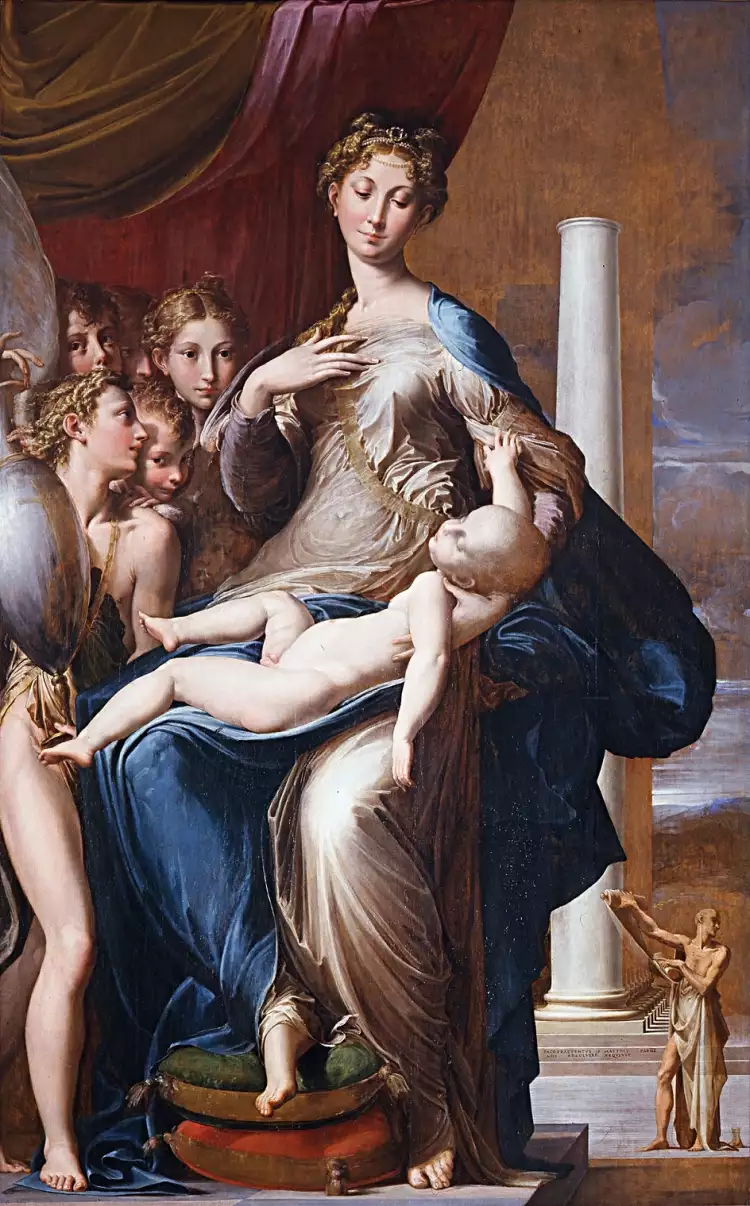 Mannerism. Parmigianino. Madonna with the Long Neck, 1534-1540
Mannerism. Parmigianino. Madonna with the Long Neck, 1534-1540
The name itself comes from the Italian word "maniera." The style received mixed assessments, ranging from sharply negative to recognition of its significant role in the development of art.
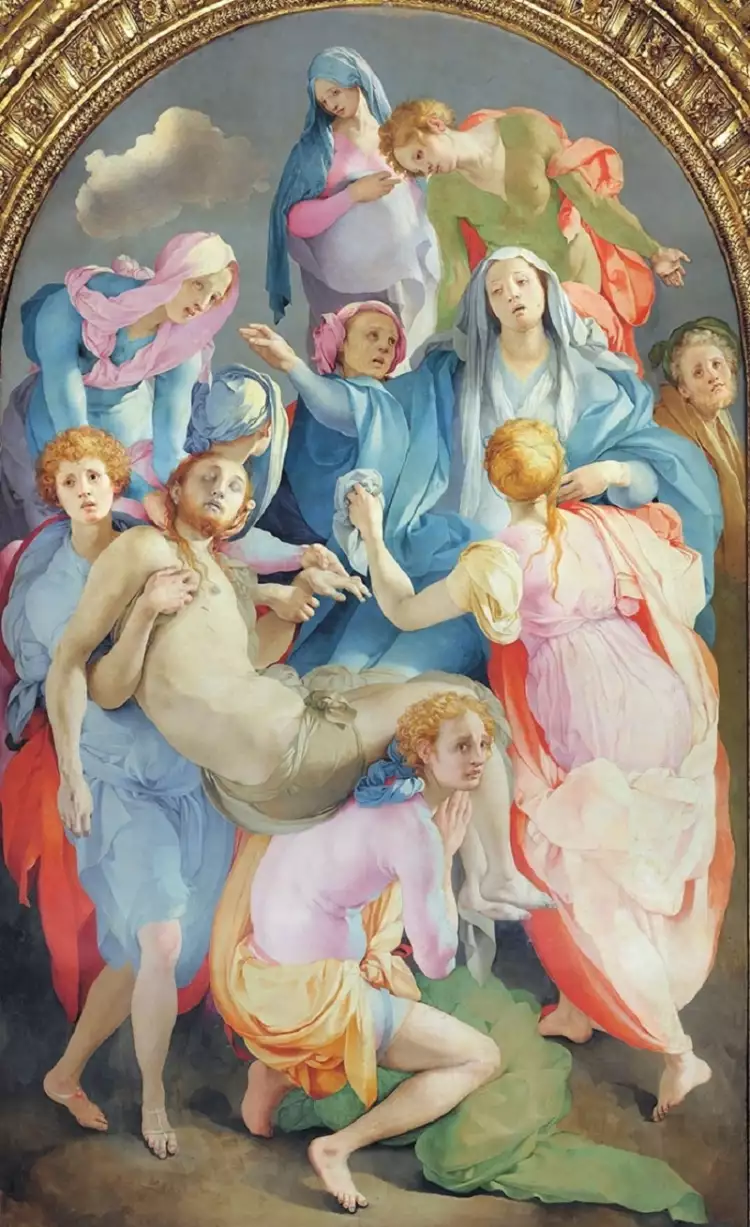 Mannerism. Jacopo da Pontormo. The Deposition from the Cross, 1525-1528
Mannerism. Jacopo da Pontormo. The Deposition from the Cross, 1525-1528
This style originated in Italy in the first half of the 16th century and remained relevant for almost a century. Many painters adopted this style in the first third of the 17th century.
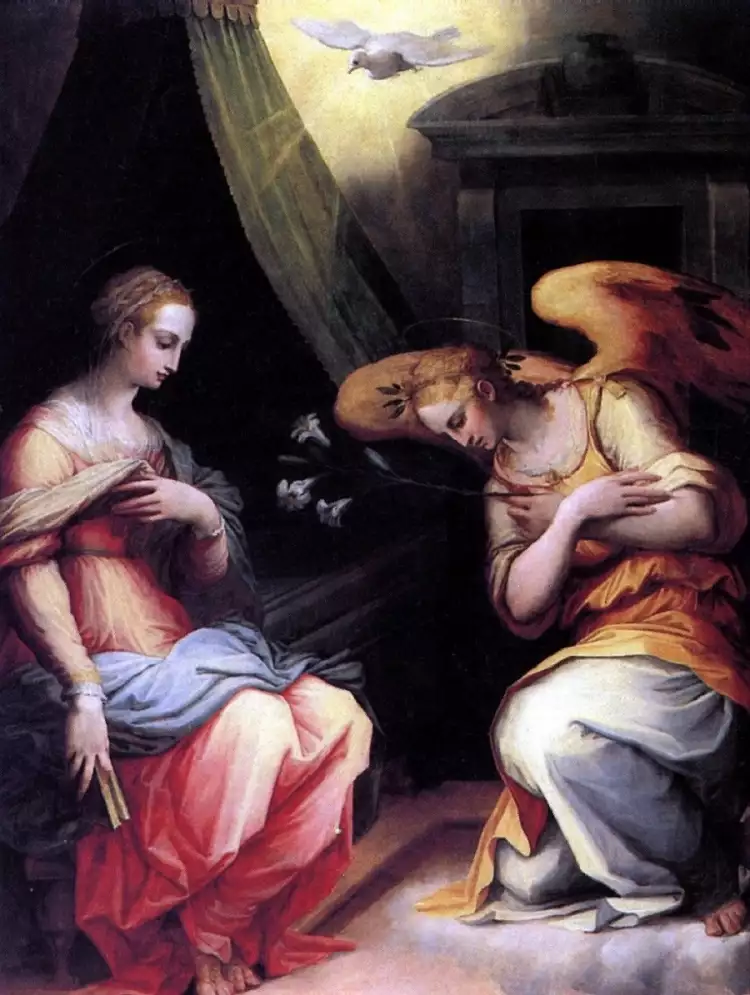 Mannerism. Giorgio Vasari. Annunciation, 1564-1567
Mannerism. Giorgio Vasari. Annunciation, 1564-1567
Mannerism was an intermediate, transitional style. It emerged in parallel with the late Renaissance and developed against the backdrop of its decline. The decline of Mannerism coincided with the triumphant spread of the emerging Baroque aesthetics across Europe (some art historians even consider this style as an early stage of Baroque).
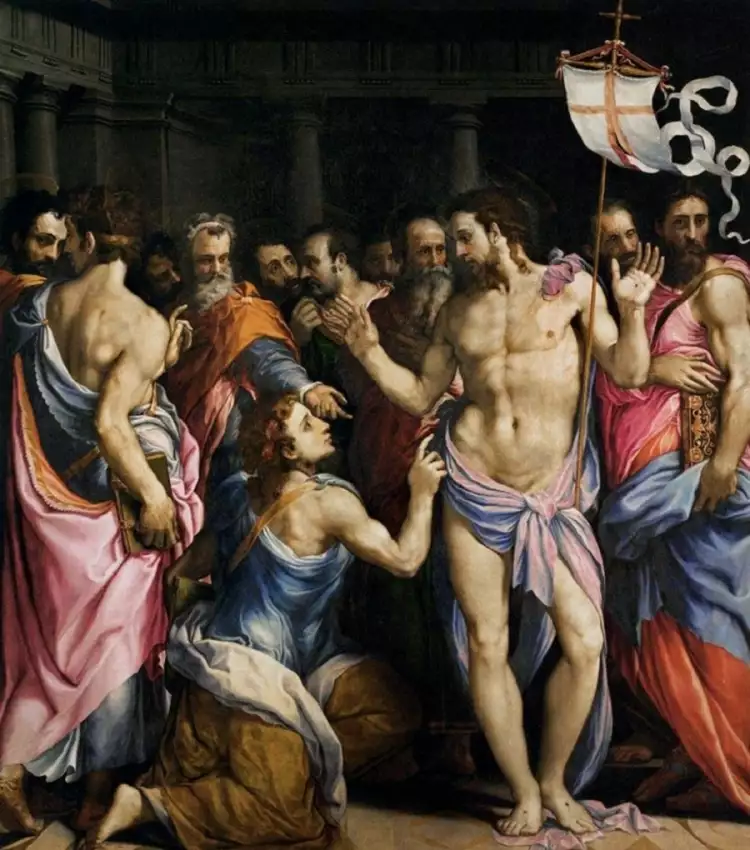 Mannerism. Francesco Salviati. The Incredulity of Saint Thomas, 1543-1547
Mannerism. Francesco Salviati. The Incredulity of Saint Thomas, 1543-1547
Mannerism - beauty born from crisis
Like Caravaggism, Mannerism reflected the complex, dramatic, and unsettling Baroque worldview that replaced the ideals of the Renaissance. Europe in the 16th century experienced a profound social crisis that shattered the former ideals and brought about a crisis of values. Confidence in the future disappeared. The world was no longer perceived as harmonious and rational, as in the Renaissance era. It seemed unpredictable, dangerous, and filled with trials and tragedies. Some scholars believe that Mannerism emerged in response to the national drama, particularly following the sacking of Rome in 1527.
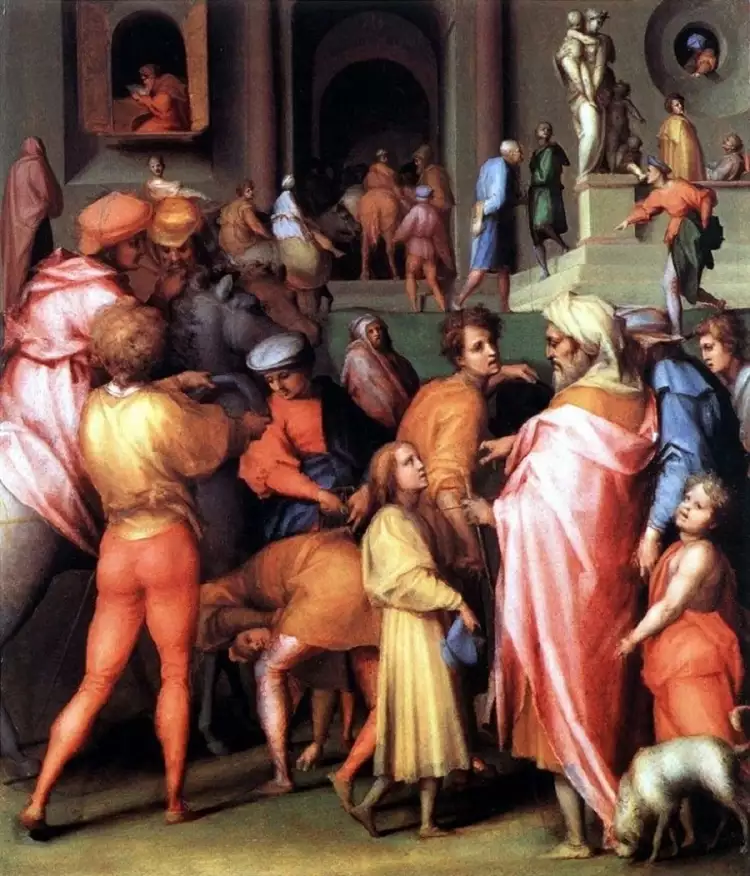 Mannerism. Jacopo da Pontormo. Joseph Sold to Potiphar, 1516-1517
Mannerism. Jacopo da Pontormo. Joseph Sold to Potiphar, 1516-1517
But, while Caravaggists conveyed the tragedy of the era through realism and sharp contrasts, Mannerists took a completely opposite path—they sought elegance and refinement, in opposition to the painful reality.
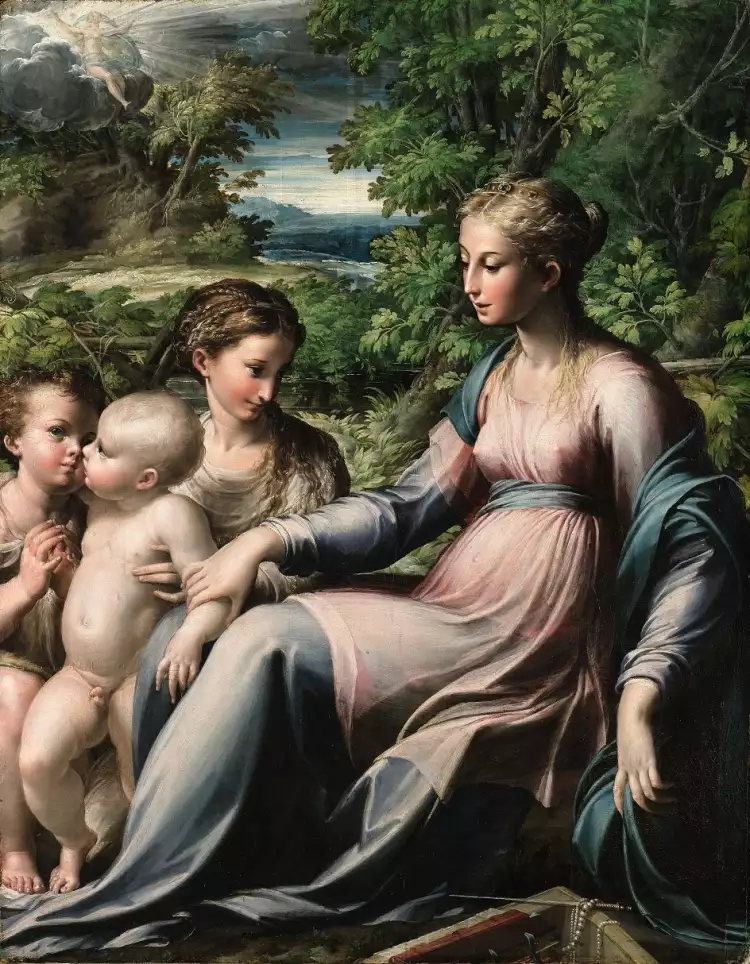 Mannerism. Parmigianino. Madonna with Child, St John the Baptist and Mary Magdalene, 1530
Mannerism. Parmigianino. Madonna with Child, St John the Baptist and Mary Magdalene, 1530
Yet, in this refinement, there was a clear reflection of the crisis-ridden worldview:
- Mannerist painters abandoned the principles of Renaissance harmony and balance. Overloaded compositions, elongated, and even distorted figures came into vogue. This reflected a subconscious sense of the deformation of social life and worldview.
- Exquisite smoothness of lines often transformed into contortions, turbulence, and serpent-like forms.
- The tension of poses conveyed a sense of inner unrest and anxiety. Many Mannerist artists used the technique of contrapposto.
- The palette became deliberately bold, sometimes even sharp or excessively sweet. Mannerists often used a combination of pink and blue colors, but not always in transparent pastel shades, as in Rococo (which, by the way, borrowed much from Mannerism), sometimes very bright.
- Enhanced spirituality characterized the themes, and the depiction of emotions became exaggerated, reaching affectation. This reflected the search for support in the transcendent. (This aspect of Mannerism would evolve into the sacred Baroque).
- Many paintings were saturated with either sublimated eroticism or emphasized asceticism. Creators swung from one extreme to another.
- Unusual effects were widely used, playing with perspective and lighting—clear Renaissance models were replaced by the search for new expressive methods.
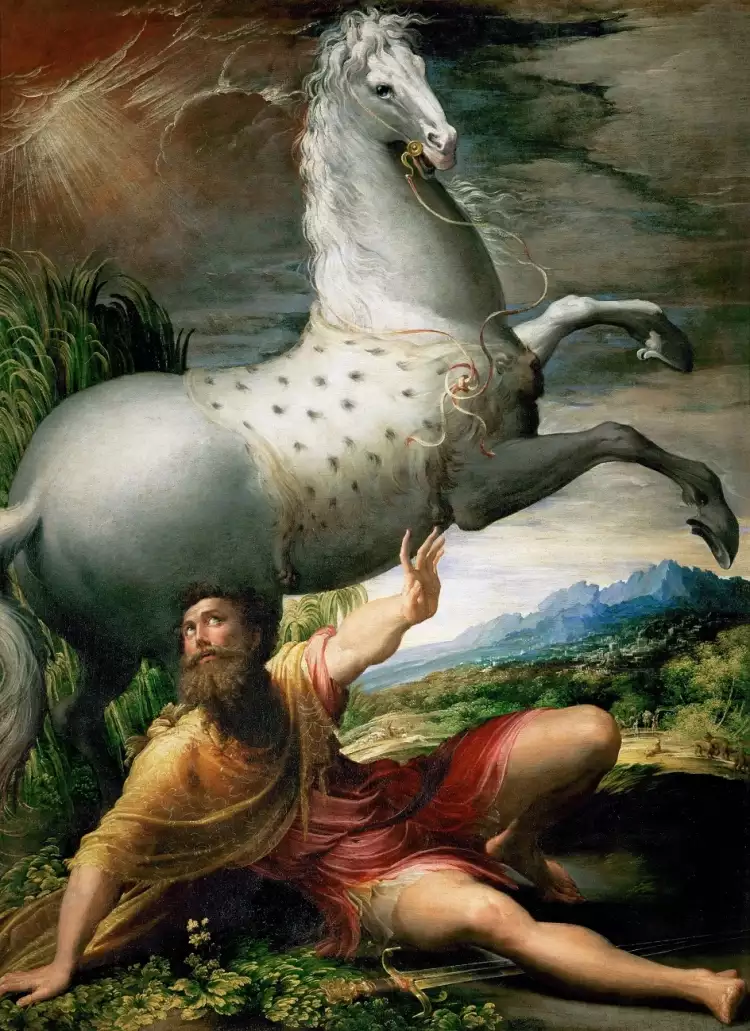 Mannerism. Parmigianino. Conversion of St Paul, 1527
Mannerism. Parmigianino. Conversion of St Paul, 1527
In contrast to mature Baroque, Mannerism lacked depth and unity. Many art historians, especially in the Soviet school, referred to the style as decadent, implying a departure from Renaissance ideals. But it was not just a rejection of Renaissance traditions; it was a period of seeking new meanings. The response to these quests was the creation of Baroque aesthetics.
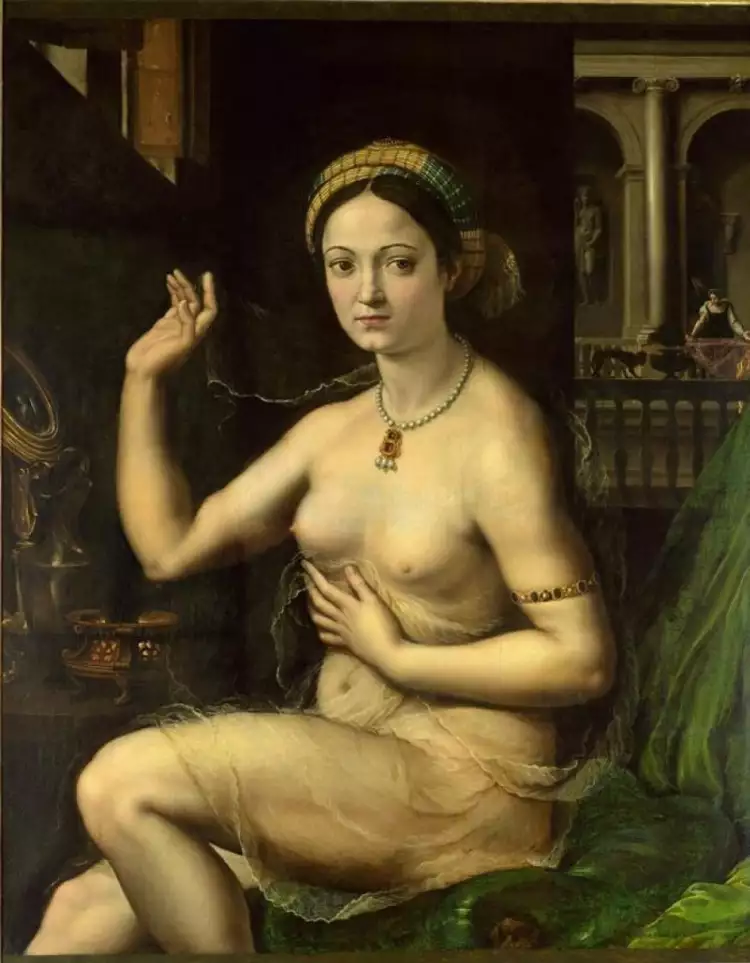 Mannerism. Giulio Romano. Donna alla toeletta, 1520
Mannerism. Giulio Romano. Donna alla toeletta, 1520
Famous Mannerist Artists
Signs of Mannerism can be traced in the works of artists like Michelangelo and Raphael, Titian and Tintoretto. However, it was most distinctly reflected in the paintings of:
- Parmigianino (1503-1540).
- Jacopo Pontormo (1494-1557).
- Giulio Romano (1499-1546).
- Giorgio Vasari (1511-1574).
- Agnolo Bronzino (1503-1572).
- One of the first renowned female artists, Artemisia Gentileschi (1593-1653).
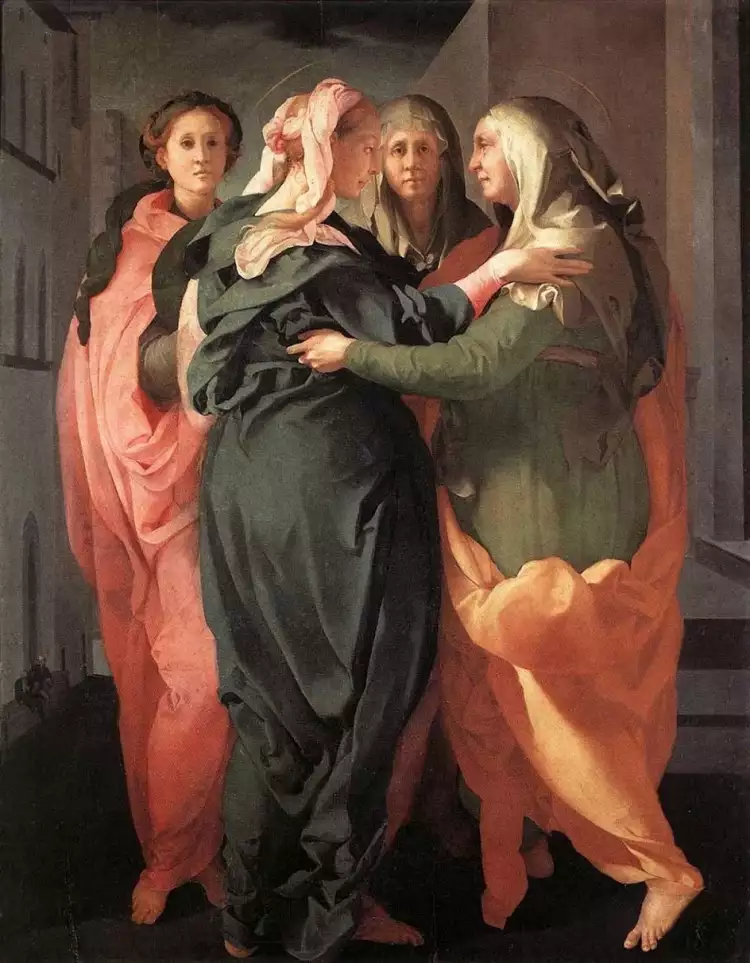 Mannerism. Jacopo da Pontormo. The Carmignano Visitation, 1528-1530
Mannerism. Jacopo da Pontormo. The Carmignano Visitation, 1528-1530
In France, the Fontainebleau School painters worked in this style. The courts of Emperor Rudolf II in Prague patronized Mannerist artists, and significant contributions to the style came from Dutch masters.
In Spain, elements of Mannerism were incorporated into the artistic language of the brilliant and distinctive El Greco. However, the uniqueness of his work goes far beyond pure Mannerism or any other style.
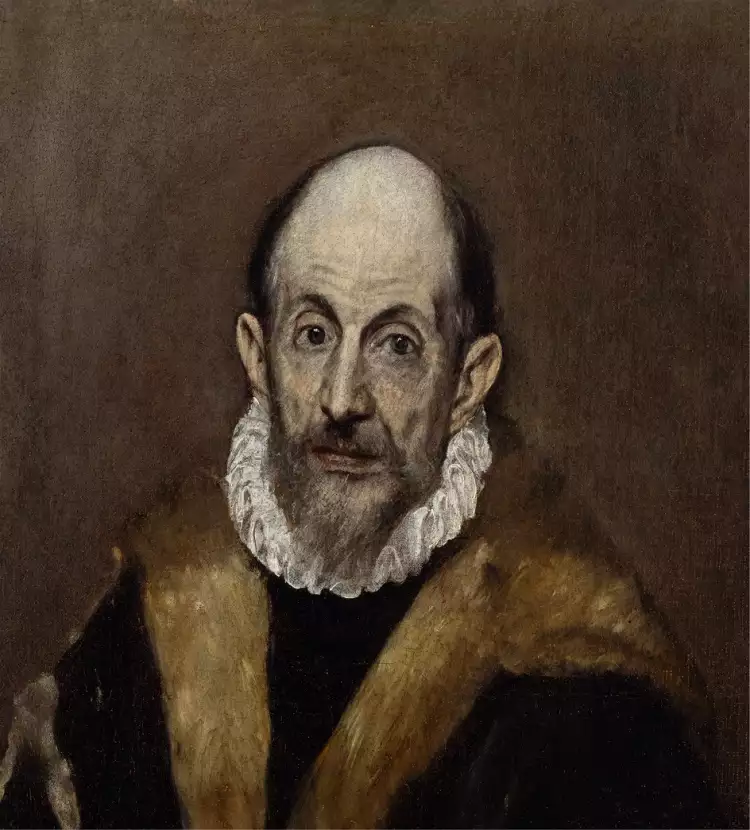 Mannerism. El Greco. Self-portrait, 1595-1600
Mannerism. El Greco. Self-portrait, 1595-1600
Despite mixed reviews, the paintings of Mannerist artists are highly valued by museums and collectors. You can purchase paintings from different eras at one of the internet auctions held on the VeryImportantLot website. Such items combine aesthetic value and excellent investment prospects.
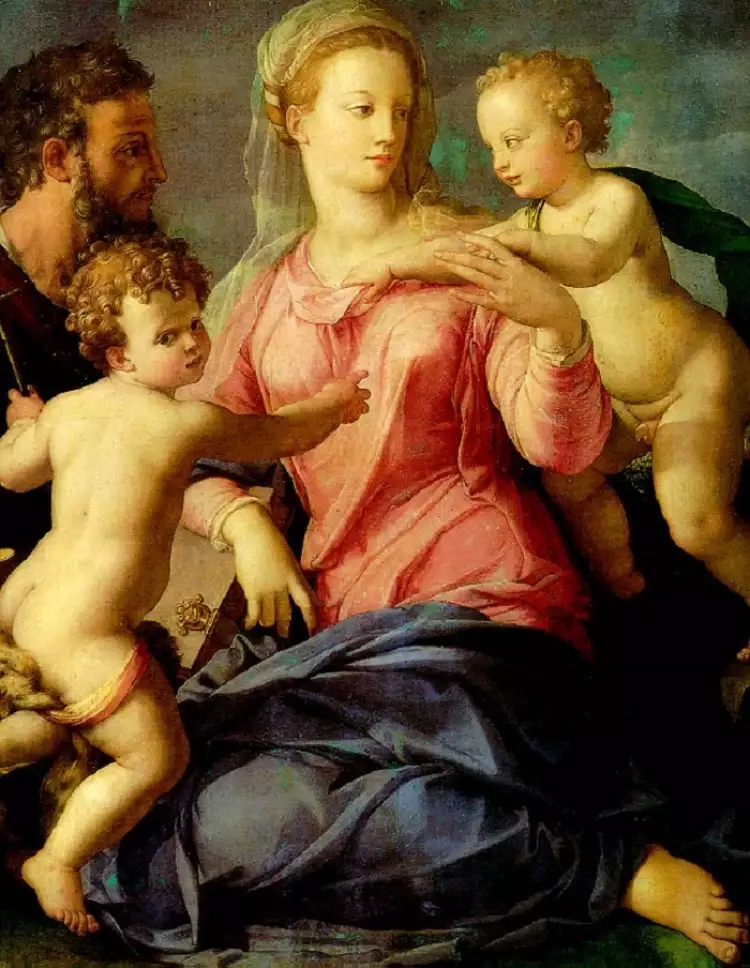
 Academism is an authoritative, virtuoso, and conservative style
Academism is an authoritative, virtuoso, and conservative style 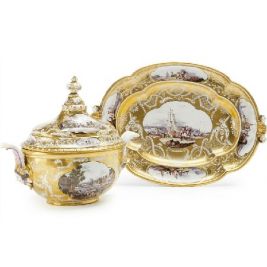 German Porcelain: History of Creation and Development
German Porcelain: History of Creation and Development  The painting "The Burning of the Houses of Lords and Commons" by William Turner is a dramatic depiction of a historical event
The painting "The Burning of the Houses of Lords and Commons" by William Turner is a dramatic depiction of a historical event  The Return of Nature: Embracing Nature Renewal Art in 2024
The Return of Nature: Embracing Nature Renewal Art in 2024  Bold Rebranding: A 2024 Design Trend Shaping Brand Identities
Bold Rebranding: A 2024 Design Trend Shaping Brand Identities 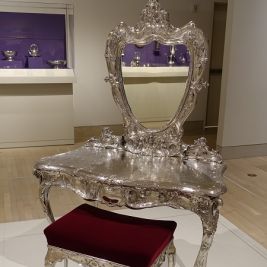 American Silver - From Colonial Times to the Present
American Silver - From Colonial Times to the Present 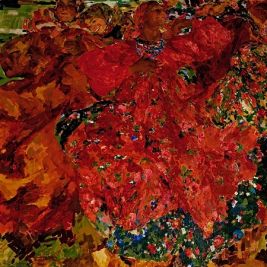 The painting " The Whirlwind" by Filipp Andreevich Malyavin is an inspiring hymn to the beauty and strength of character of Russian peasant women
The painting " The Whirlwind" by Filipp Andreevich Malyavin is an inspiring hymn to the beauty and strength of character of Russian peasant women 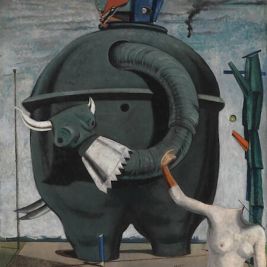 Modernism in painting - a different interpretation of reality
Modernism in painting - a different interpretation of reality 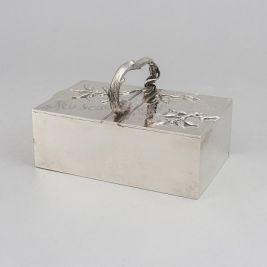 Lorie Company - silver in the Art Nouveau style
Lorie Company - silver in the Art Nouveau style  Numismatics is a serious scientific discipline or enthusiastic collection of ancient coins
Numismatics is a serious scientific discipline or enthusiastic collection of ancient coins